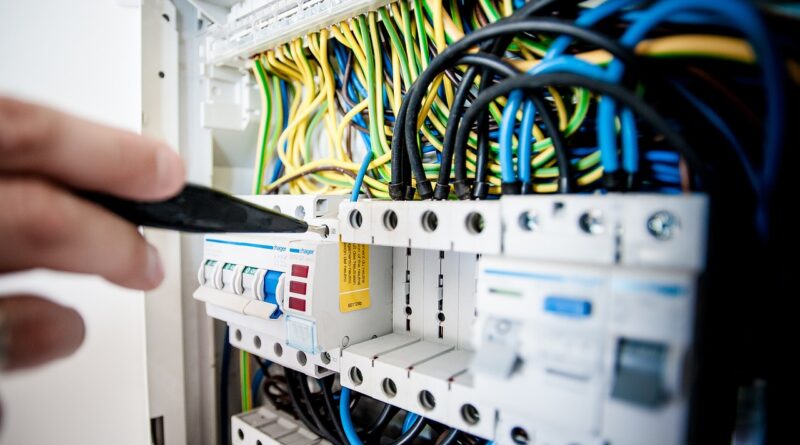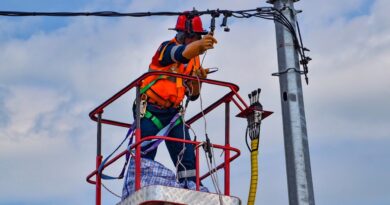Beyond Compliance: Unlocking the Secrets to Optimal Electrical Safety Audits
Introduction
In today’s fast-paced world, electricity plays a vital role in powering our homes, businesses, and industries. However, it also poses significant risks if not managed properly. Electrical accidents can result in injuries, fatalities, property damage, and financial losses. To ensure the safety of individuals and protect valuable assets, organizations must prioritize electrical safety audits. These audits go beyond mere compliance with regulations and standards and aim to uncover potential hazards and improve overall safety measures. In this article, we will explore the secrets to conducting optimal electrical safety audits, going beyond compliance and maximizing safety outcomes.
-
Understanding Electrical Safety Audits
Electrical safety audits are comprehensive assessments conducted to identify potential electrical hazards, evaluate existing safety measures, and ensure compliance with applicable regulations and industry standards. These audits involve a systematic examination of electrical systems, equipment, and work practices, with the objective of mitigating risks and preventing accidents.
-
Importance of Electrical Safety Audits
2.1 Risk Identification and Mitigation
Electrical safety audits help organizations identify potential hazards and vulnerabilities within their electrical systems. By conducting thorough inspections, audits can uncover faulty wiring, improper grounding, overloaded circuits, outdated equipment, and other risks. This early identification allows for timely mitigation measures to be implemented, reducing the likelihood of accidents and associated damages.
2.2 Compliance with Regulations and Standards
Compliance with electrical safety regulations and standards is a legal and ethical obligation for organizations. Failure to comply can lead to severe penalties, legal liabilities, damaged reputation, and most importantly, harm to individuals. Safety audits ensure that organizations meet all relevant requirements and take appropriate measures to maintain a safe electrical environment.
2.3 Cost Savings
Investing in electrical safety audits may seem like an added expense, but it can save organizations significant costs in the long run. By identifying potential risks, audits allow for proactive maintenance and repairs, minimizing the chances of electrical failures, downtime, and costly repairs. Moreover, a safe working environment reduces the risk of accidents, injuries, and associated medical expenses, insurance claims, and legal costs.
-
Secrets to Optimal Electrical Safety Audits
3.1 Competent Audit Team
To conduct effective electrical safety audits, organizations must assemble a competent team comprising qualified electrical engineers, safety experts, and technicians. These professionals should have a deep understanding of electrical systems, relevant regulations, and industry best practices. Their expertise enables them to identify potential risks, propose feasible solutions, and provide valuable recommendations for improvement.
3.2 Comprehensive Audit Planning
Proper planning is crucial for optimizing electrical safety audits. Before initiating the audit, the team should define clear objectives, scope, and methodologies. They should review existing documentation, including electrical drawings, maintenance records, and incident reports. This helps the team focus on critical areas, prioritize inspections, and allocate resources effectively.
3.3 Thorough Inspection and Testing
During the audit, a detailed examination of electrical systems, equipment, and work practices must be conducted. This includes inspecting electrical panels, wiring, grounding systems, protective devices, and personal protective equipment (PPE). Additionally, various tests such as insulation resistance, circuit breaker testing, and thermal imaging should be performed to identify hidden issues that may not be apparent during visual inspections.
3.4 Documentation and Reporting
Accurate and detailed documentation is essential for effective electrical safety audits. The audit team should maintain comprehensive records of their findings, including photographs, test results, and observations. These records serve as a reference for future audits, tracking progress, and measuring improvements. A well-structured audit report should be prepared, highlighting identified hazards, recommended corrective actions, and timelines for implementation.
3.5 Employee Engagement and Training
Electrical safety is a collective responsibility that involves everyone in the organization. Employee engagement is crucial for the success of electrical safety audits. Employees should be actively involved in the audit process, providing insights into their daily work practices, potential hazards, and concerns. Additionally, training programs should be implemented to enhance employees’ electrical safety awareness, knowledge, and skills.
3.6 Continuous Improvement
Optimal electrical safety audits go beyond a one-time assessment; they embrace a culture of continuous improvement. Organizations should establish mechanisms to track the implementation of corrective actions, monitor safety performance, and periodically review and update safety procedures. Regular audits should be conducted to ensure ongoing compliance and identify emerging risks as systems evolve.
Conclusion
Electrical safety audits are indispensable for organizations aiming to ensure the safety of their personnel and protect their assets. By going beyond mere compliance and embracing the secrets to optimal electrical safety audits, organizations can identify potential hazards, mitigate risks, and create a culture of safety. Through competent audit teams, comprehensive planning, thorough inspections, accurate documentation, employee engagement, and a focus on continuous improvement, organizations can unlock the full potential of electrical safety audits and safeguard against electrical accidents. Prioritizing electrical safety is not just a legal requirement; it is an investment in the well-being of individuals and the long-term success of the organization.




